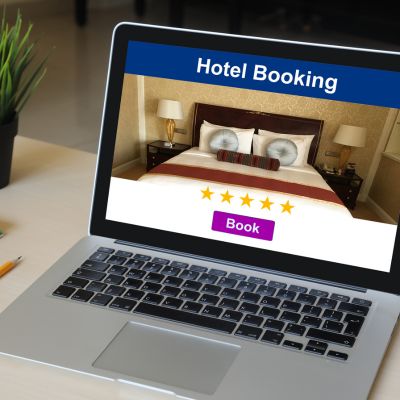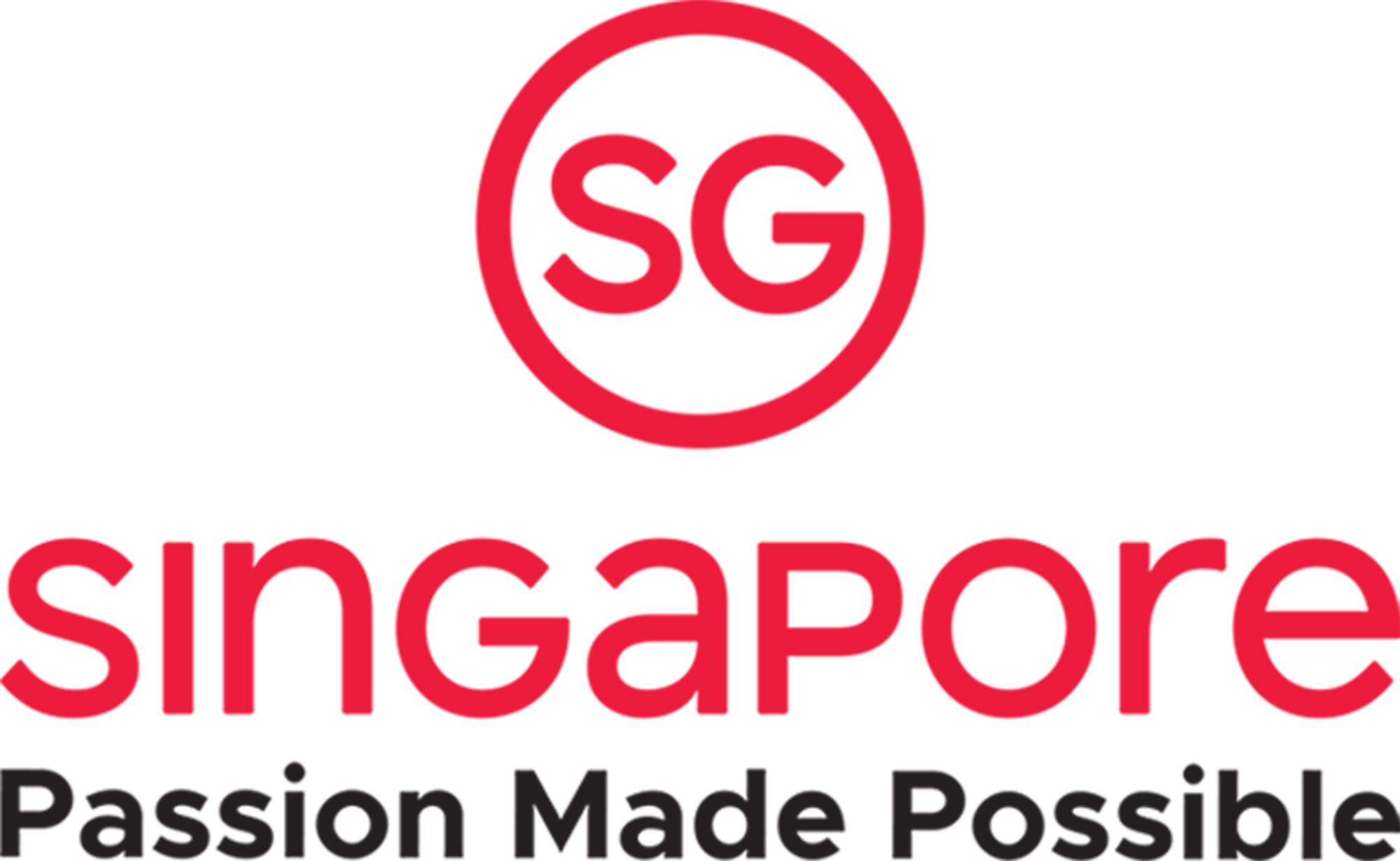Do you know how your hotel compares to competitors in your region or industry? Knowing this can make all the difference between a growing hotel business and one that struggles to keep up.
This is where hotel benchmarking comes in. When you compare your performance to other hotels or the general industry standards, you can better understand where your hotel excels and where improvements are needed.
For hotel owners, managers, and hospitality professionals, hospitality benchmarks offer essential insights into occupancy, average daily rate (ADR), and overall guest satisfaction.
These metrics help guide decision-making, leading to increased profitability, higher customer satisfaction, and a better market position.
In this guide, we’ll discuss what hotel benchmarking means, the key performance indicators (KPIs) to focus on, and the tools available to implement benchmarking effectively.
What is Hotel Benchmarking?

Before exploring hotel-specific benchmarking, it’s important to grasp the concept of benchmarking as a whole. Benchmarking refers to comparing a business’s performance metrics against those of others in the same industry.
In the hospitality industry, benchmarking involves comparing various hotel performance metrics against competitors’ or industry standards. This comparison helps hotels understand where they stand and identify areas for improvement.
Benchmarking in hotel settings can be divided into various types, which we’ll explore in more detail. Ultimately, it allows hotels to strive for continuous improvement by learning from others and setting higher operational standards.
Many major hotel brands and industry leaders rely on benchmarking to maintain their competitive edge, including well-known chains like Marriott, Hilton, and Hyatt, which actively use benchmarking to track metrics like RevPAR and ADR.
Types of Hospitality Benchmarking
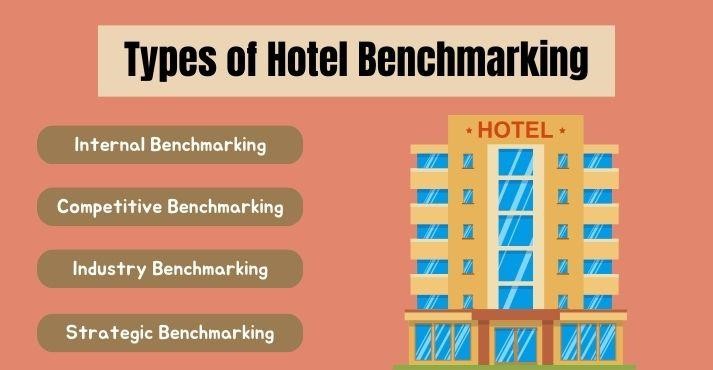
Benchmarking in the hotel industry takes several forms, each serving different purposes. Identifying these types can help hotel managers decide where to focus their efforts.
1. Internal Benchmarking
Internal benchmarking involves comparing different departments or branches within the same hotel or hotel chain. This type of benchmarking is helpful for large hotel chains that operate across different locations.
For example, Marriott International, one of the largest global hotel chains, frequently uses internal benchmarking to compare its locations across countries. Each location is measured on metrics like occupancy rate and customer satisfaction.
When performing internal benchmarking, Marriott can identify which locations perform best and why. They can then apply best practices to improve efficiency and profitability across other locations.
2. Competitive Benchmarking
Competitive hotel benchmarking involves comparing your hotel’s performance against direct competitors in the same market. For example, if your hotel is in Singapore, you would compare your performance against that of other similar hotels.
Competitive benchmarking commonly uses metrics like occupancy and average daily rates. This type of benchmarking allows hotels to identify competitive advantages and opportunities to improve.
A real-life example of competitive benchmarking comes from Hyatt Hotels Corporation. Hyatt consistently compares its properties against competitors like Marriott and Hilton in key markets such as Chicago and Los Angeles.
3. Industry Benchmarking
Industry benchmarking compares your hotel’s performance against overall industry standards. This method provides a broader perspective, helping you understand how your hotel fares compare to national or global averages.
In the hotel industry, industry reports from STR (Smith Travel Research) are commonly used to perform this type of benchmarking. STR provides global data on key performance metrics like RevPAR and ADR.
4. Strategic Benchmarking
Strategic benchmarking looks beyond immediate performance metrics and focuses on long-term goals and strategies. This type of hotel benchmarking helps hotels compare their overall business strategies with top-performing hotels, providing a roadmap for long-term success.
Major chains like Hilton and AccorHotels often use strategic benchmarking to stay ahead of industry trends and continually evolve their service offerings.
For instance, Hilton’s “Travel with Purpose” initiative, which focuses on sustainability and corporate responsibility, was developed after strategic benchmarking efforts. Hilton benchmarked its efforts against other companies leading in sustainability, like AccorHotels, to refine its strategy.
KPIs in Hotel Benchmarking
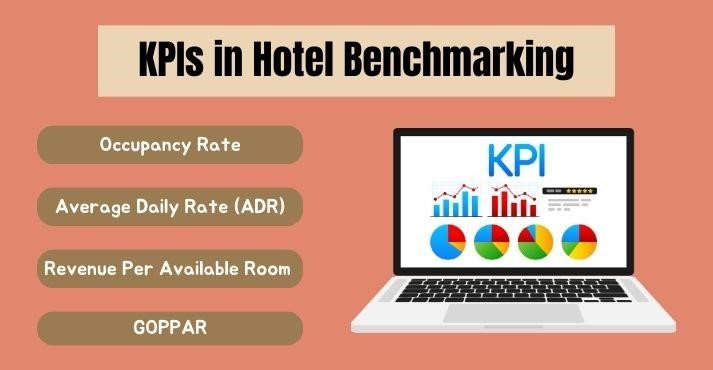
Specific Key Performance Indicators (KPIs) are essential for evaluating a hotel’s performance regarding benchmarking.
Let’s explore the most important KPIs hotels use to benchmark in hotel settings.
1. Occupancy Rate
The occupancy rate measures the percentage of available rooms filled over a period. It is one of the most critical KPIs in hotel benchmarking because it indicates how effectively a hotel utilizes its rooms.
A higher occupancy rate means the hotel efficiently attracts guests, while a lower rate could signal the need for improved marketing or pricing strategies.
During the peak tourist season, hotels in different tourist attractions in cities have higher occupancy rates due to increased travel demand.
2. Average Daily Rate (ADR)
The average daily rate (ADR) reflects the average revenue earned per occupied room. This metric helps hotels gauge how well they price their rooms compared to competitors.
When comparing ADR with competitors’ or industry averages, a hotel can determine whether it needs to adjust its pricing strategy to maximize revenue.
Hotels often adjust their ADR to reflect market demand in cities with high hotel room demand.
3. Revenue Per Available Room (RevPAR)
Revenue per available room (RevPAR) combines occupancy rate and ADR. It is one of the most widely used metrics in hotel benchmarking because it provides a comprehensive view of a hotel’s performance. A high RevPAR suggests that the hotel effectively manages its pricing and occupancy.
A real-life example of RevPAR benchmarking is in Las Vegas, a city known for fluctuating room rates based on demand.
4. Gross Operating Profit Per Available Room (GOPPAR)
While RevPAR focuses on revenue, GOPPAR digs deeper by looking at profitability. GOPPAR measures gross operating profit per available room, giving insight into how well a hotel controls its costs relative to its revenue. This is especially important for hotel owners and managers looking to improve profitability.
When comparing GOPPAR across similar categories, hotels can identify cost-saving measures to enhance their profitability.
5. Customer Satisfaction Scores
In today’s digital age, guest reviews and feedback play a crucial role in a hotel’s success. Monitoring customer satisfaction scores is vital for assessing how well a hotel meets guest expectations.
Platforms like TripAdvisor and Google Reviews offer valuable insights into how guests rate their experience.
For example, a study conducted by Cornell University found that hotels with higher online review scores could charge more for their rooms while maintaining high occupancy rates.
When benchmarking customer satisfaction scores, hotels can determine if they are delivering a superior guest experience compared to competitors.
Benchmarking Sources and Tools
Access to accurate data and reliable tools is essential for successful benchmarking. Let’s examine the main sources and tools that hotels use to gather data and perform benchmarking in hotel environments.
1. Industry Reports
Industry reports are one of the most trusted sources for hotel benchmarking data. These reports provide aggregated data on key performance metrics like RevPAR, occupancy rate, and ADR across different regions and market segments.
STR (Smith Travel Research) is one of the leading providers of these reports, offering detailed insights into hotel performance globally.
During the COVID-19 pandemic, STR’s weekly reports on hotel performance became a critical tool for hoteliers to understand how the pandemic affected their occupancy rates and ADR. These insights helped hotels adjust their real-time pricing strategies and marketing efforts.
2. Competitor Analysis
Analyzing your competitors is another key method of gathering benchmarking data. Competitor analysis involves comparing your hotel’s performance metrics to those of nearby hotels or those in the same market segment.
When benchmarking the hotel industry, metrics like average daily rate, RevPAR, and customer satisfaction scores are commonly used in competitor analysis.
When analyzing how competitors manage pricing and promotions, hotels can refine their own strategies to attract more guests.
3. Property Management Systems (PMS)
A Property Management System (PMS) is a critical tool for managing day-to-day hotel operations. It can also serve as a valuable source of internal data for hotel benchmarking.
Many modern PMS platforms, such as Opera and RoomKeyPMS, collect vast amounts of data, including bookings, revenue, and guest preferences.
These systems allow hotels to monitor and compare their internal performance over time, identifying trends and making data-driven decisions.
Hotels can also use their PMS to perform internal benchmarking across different departments or locations. For example, a hotel chain may compare the performance of its housekeeping staff across different properties.
If one property consistently has higher customer satisfaction scores related to cleanliness, that location’s best practices can be shared across the entire chain.
Moreover, PMS systems often integrate with external hotel benchmarking tools, allowing hotels to compare their internal data with industry averages or competitor performance.
When combining internal PMS data with external reports from platforms like STR, hotels can gain a more comprehensive view of their market position and make informed decisions about pricing, staffing, and resource allocation.
4. Benchmarking Software
In addition to industry reports and PMS platforms, hotels can leverage specialized benchmarking software to streamline the process.
These tools are designed to collect, analyze, and compare data across various metrics, offering hotels actionable insights that can drive performance improvements.
Popular benchmarking software for the hospitality industry includes STR, HotelBenchmark, and PwC’s Hospitality Directions.
For instance, STR’s reports are widely used in the industry and provide key insights into hotel performance locally and globally. The data STR collects includes occupancy rate, ADR, and RevPAR, enabling hotels to benchmark their performance against competitors and industry averages.
STR’s Hotel Survey Report, which covers thousands of hotels worldwide, is one of the most comprehensive tools available. It provides hoteliers with pivotal data points to improve performance.
How to Implement Hotel Benchmarking?
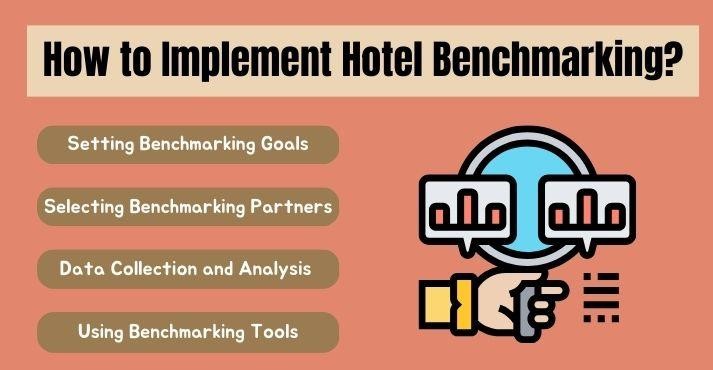
Successfully implementing hotel benchmarking requires a well-thought-out approach. This section will cover the steps for integrating benchmarking into your hotel’s operations, from setting clear goals to using specialized tools.
1. Setting Benchmarking Goals
Establishing clear and measurable goals is essential in implementing hotel benchmarking. Defining success is essential if you want to improve your occupancy rate, increase your average daily rate, or increase your guest satisfaction scores.
Once you have identified your goals, you can focus on collecting the correct data and comparing your performance to the relevant benchmarks.
Defining your goals also helps determine which type of benchmarking is most appropriate. If your primary goal is to increase profitability, then focusing on metrics like GOPPAR and RevPAR would be more relevant than customer satisfaction scores.
However, if your goal is to improve guest experience, and customer satisfaction, online reviews will be more critical.
2. Selecting Benchmarking Partners
The next step in the hotel benchmarking process is selecting the right competitors or industry standards against which to compare. Hotels should compare themselves to similar properties in size, location, and target market.
Hotels can also benefit from choosing benchmarking partners operating in similar market segments. For example, budget hotels would benefit from comparing their ADR and occupancy rates to other budget hotels rather than luxury resorts.
Similarly, hotels located in business districts might benchmark their RevPAR and occupancy rates against other business-oriented hotels in their region, especially during significant conventions or business events.
Selecting the right partners ensures that the benchmarking process yields meaningful insights, allowing hotels to adjust their operations, pricing, and marketing strategies.
3. Data Collection and Analysis
Data collection is the foundation of any successful benchmarking effort. Accurate and timely data is essential for comparing performance against benchmarks and making informed decisions.
Hotels can gather data from various sources, including their own Property Management Systems (PMS), industry reports, and external benchmarking tools.
Collecting data on all relevant metrics, including occupancy rate, ADR, RevPAR, GOPPAR, and customer satisfaction scores, is essential.
The data should be collected consistently over time to allow for meaningful comparisons. Once the data is collected, it’s crucial to analyze it carefully to identify trends and areas of improvement.
For example, suppose a hotel notices that its ADR is significantly lower than the industry average. In that case, it may adjust its pricing strategy or introduce promotional offers to attract more bookings.
Conversely, if a hotel’s occupancy rate is high but RevPAR is low, it may indicate that it is underpricing its rooms. An adjustment to room rates could increase overall revenue.
Data analysis tools, such as those provided by STR or HotelBenchmark, can help hotels understand the data and identify actionable insights.
4. Using Benchmarking Tools
As previously mentioned, numerous tools can make the hotel benchmarking process more efficient and accurate.
Platforms like STR, PwC’s Hospitality Directions, and HotelBenchmark offer detailed reports and comparisons that allow hotels to stay competitive. These tools provide data and offer insights and forecasts that can help hotels plan for the future.
For instance, STR’s comprehensive reports allow hotels to compare their performance to competitors in real-time, helping them adjust their strategies.
A hotel might use STR data to compare its RevPAR with nearby properties and identify if it needs to adjust its room rates during peak seasons or special events.
When you start by integrating external data from industry reports with internal data from the PMS, hotels can gain a holistic view of their performance and make data-driven decisions that improve profitability and guest engagement.
6 Advantages of Hotel Benchmarking
Hotel benchmarking emerges as a strategic cornerstone, offering many advantages that contribute to improved decision-making, heightened competitiveness, and the pursuit of operational excellence.
Let’s dive into the benefits that make hotel benchmarking an indispensable tool for success in the hospitality industry.
1. Improved Decision-Making
Hotel benchmarking facilitates Improved Decision-Making by providing comprehensive insights into a hotel’s performance compared to industry peers.
Management can make informed decisions regarding pricing strategies, marketing initiatives, and operational improvements with data on hotel KPIs.
This data-driven approach enhances the precision and effectiveness of decision-making processes.
2. Enhancing Hotel Competitiveness
Benchmarking is a powerful tool for Enhancing Hotel Competitiveness. By comparing performance metrics with competitors, hotels gain a strategic advantage.
This process enables them to identify areas where they excel and need improvements. With this knowledge, hotels can adjust their strategies, services, and offerings to stand out in a competitive market.
3. Achieving Operational Excellence
The pursuit of Operational Excellence is a core advantage of hotel benchmarking.
By evaluating internal processes against industry best practices, hotels can identify operational inefficiencies and streamline workflows. This enhances efficiency and contributes to a seamless and superior guest experience.
4. Strategic Benefits of Benchmarking
The Strategic Benefits of Benchmarking encompass a holistic approach to performance evaluation.
Beyond individual metrics, benchmarking enables hotels to align their strategies with overarching business goals. It empowers management to set realistic targets, adapt to industry trends, and stay ahead of market dynamics.
5. Excellence in Hotel Operations
Hotel benchmarking contributes to Excellence in hotel operations management by fostering a culture of continuous improvement.
Regularly evaluating and comparing performance metrics allows hotels to spot trends, anticipate changes in consumer behavior, and adapt proactively—this commitment to operational excellence positions hotels as leaders in the industry.
6. Identifying Improvement Areas
One of the primary advantages of hotel benchmarking is Identifying Improvement Areas. Whether in terms of guest satisfaction, revenue optimization, or operational efficiency, benchmarking highlights specific areas where a hotel can enhance its performance.
This targeted approach accelerates improvement initiatives, leading to a more resilient and adaptable operation.
Challenges and Considerations in Hotel Benchmarking
While hotel benchmarking offers a wealth of strategic advantages, it has challenges. Navigating issues related to data accuracy, industry variations, and benchmark relevance requires careful consideration.
Let’s explore these challenges and provide insights into how hotels can address them to extract maximum value from benchmarking.
1. Ensuring Data Accuracy in Hospitality
Ensuring Data Accuracy in Hospitality is a fundamental challenge. Reliable benchmarking relies on accurate and up-to-date data.
Hotels must establish robust data collection processes, invest in quality assurance measures, and periodically audit their data sources to guarantee the accuracy of the information used for benchmarking.
2. Adapting to Industry Variances
The hospitality industry is dynamic, with Industry Variances presenting a challenge in benchmarking. Variations in regional demands, cultural preferences, and economic factors can impact performance metrics.
Hotels should recognize these nuances and adapt their benchmarking approach accordingly. Utilizing industry-specific benchmarks that consider local influences enhances the relevance of the comparison.
3. Relevant Benchmarks
Selecting Relevant Benchmarks is critical for a meaningful benchmarking process. Generic benchmarks may not capture the unique characteristics of a hotel or its target market.
Hotels should carefully choose benchmarks that align with their business model, target audience, and geographical location. This ensures that the insights gained are pertinent to the hotel’s context.
4. Overcoming Benchmarking Challenges
The key to effective hotel benchmarking lies in proactively overcoming benchmarking challenges. This involves continuous improvement in data collection processes, staying abreast of industry trends, and fostering a culture of adaptability within the organization.
By addressing challenges head-on, hotels can refine their benchmarking practices and derive more accurate and actionable insights.
5. Data Security and Privacy
An additional challenge in hotel benchmarking is Data Security and Privacy. Hotels must prioritize the protection of sensitive guest and operational data.
Implementing robust cybersecurity measures, complying with data protection regulations, and ensuring secure data-sharing practices are vital to mitigating this challenge.
6. Customizing Benchmarking Approaches
Hotels often face the challenge of Customizing Benchmarking Approaches to suit their unique characteristics. One size does not fit all in benchmarking.
Tailoring the approach based on the hotel’s size, service offerings, and market positioning ensures that the benchmarks chosen genuinely reflect the hotel’s performance.
Conclusion
Hotel benchmarking is invaluable for improving a hotel’s performance, staying competitive, and ensuring long-term success in the hospitality industry.
When tracking key metrics like occupancy rate, RevPAR, ADR, and GOPPAR, hotels can compare their performance to industry standards and competitors, identifying strengths and opportunities for improvement.
From selecting the right benchmarking partners to using specialized tools like STR and PwC’s Hospitality Directions, a strong benchmarking strategy allows hotels to make informed decisions.
These decisions, in turn, drive profitability, improve guest satisfaction, and ensure that your hotel remains competitive in an ever-changing market.

